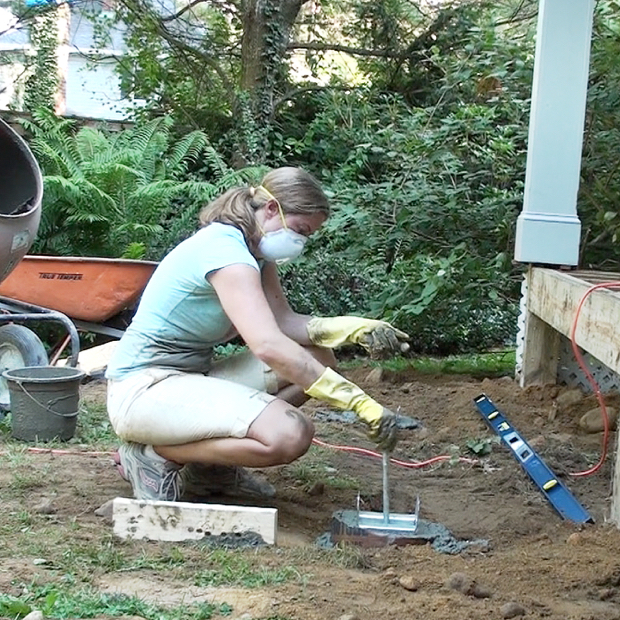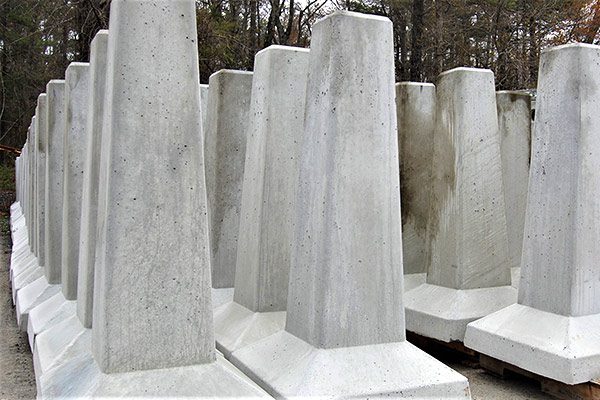Structure from scratch: The Ultimate Overview to Designing and Putting Up Deck Footings
Picking the Right Deck Footings for Security and Toughness
When it comes to constructing a deck, one of one of the most essential choices you will certainly make is picking the right grounds for security and toughness. The longevity and safety and security of your deck depend heavily on the sort of grounds you select, as they offer the important assistance and stability to withstand the examination of time. With a myriad of options available, it can be frustrating to figure out which grounds are best fit for your particular requirements. In this discussion, we will explore the various types of deck footings, think about the vital factors to evaluate when choosing, and explore the advantages and disadvantages of different options. By the end, you will certainly have a clearer understanding of the selections available and be far better geared up to make a notified choice for your deck project.
Sorts Of Deck Footings
There are several types of deck footings that can be used, each offering special benefits and factors to consider. One common sort of footing is the concrete pier ground. These footings contain a cylindrical hole loaded with concrete, which offers a solid structure for the deck posts. Concrete pier footings are relatively very easy to install and offer exceptional security, making them a prominent option for several deck tasks.
These footings are mounted by screwing them into the ground, which develops a secure structure for the deck. They additionally permit for simple adjustment and leveling of the deck if required.
Alternatively, some building contractors select precast concrete footings. These footings are made of sturdy concrete and be available in various shapes and dimensions to suit different deck styles. Precast concrete footings are hassle-free to mount and supply a secure base for the deck structure.
Finally, an additional alternative is the post-in-anchor footing system. This kind of footing involves driving a steel anchor into the ground and connecting it to the deck blog post. It provides versatility in terms of positioning the deck posts and is ideal for decks with light-weight frameworks.
When choosing the appropriate kind of deck footing, it is vital to consider variables such as dirt problems, deck load, and regional building regulations (Deck Footings). Consulting with a professional contractor or structural engineer can aid make certain the proper footing is chosen for a safe and secure deck
Variables to Think About When Selecting Grounds
When choosing the proper grounds for a deck, it is essential to carefully take into consideration numerous elements such as soil problems, deck lots, and adherence to neighborhood building codes. These factors play a considerable function in making sure the stability and resilience of the deck structure.
One of the key aspects to think about is the soil conditions. The sort of soil on which the deck will be built identifies the sort of grounds required. Decks constructed on loose or sandy dirts may require much deeper footings to provide adequate support and avoid settling. On the other hand, decks improved clay or large dirts may need footings that can accommodate the dirt's tendency to expand and contract.
Another important element is the deck load. The weight of the deck, consisting of the materials made use of and any type of prospective real-time lots such as furniture or events, must be thought about when choosing footings. The grounds must be designed to bear the weight of the deck and distribute it evenly to stop any architectural problems or failures.
Last but not least, adherence to regional building regulations is critical. Building regulations differ from area to area, and it is necessary to comply with the certain requirements set by the local authorities. Deck Footings. These codes link make sure that the deck is developed securely and meets the necessary criteria for architectural honesty and load-bearing capacity
Concrete Grounds: Advantages And Disadvantages

When utilized as the foundation for a deck,Concrete grounds offer several benefits and drawbacks. On the favorable side, concrete grounds offer excellent security and sturdiness. Concrete is a stiff and strong material that can sustain hefty lots and stand up to different climate condition. It additionally has a lengthy life expectancy, making it a dependable choice for long-lasting use.
One more benefit of concrete footings is their versatility. They can be poured right into various sizes and shapes to fit various deck styles and arrangements. Concrete grounds can be customized to fit the specific requirements and requirements of advice the deck structure.
Nonetheless, there are additionally some disadvantages to utilizing concrete grounds. This can increase the general price of the deck project and may need expert support.

Helical Piers Vs. Sonotubes: Which Is Much better?
In considering the foundation choices for a deck, the comparison between helical piers and sonotubes is crucial in figuring out the exceptional choice. They are turned right into the ground using hydraulic machinery, supplying a durable and steady structure for the deck.
When it involves stability and toughness, helical piers have the top hand. The helical plates on the piers produce a strong grasp with the soil, changing or preventing any kind of movement of the deck. This is especially valuable in locations with unpredictable or shifting dirt conditions. Sonotubes, on the various other hand, depend solely on the concrete loading for stability, which may not offer the same level of strength and resistance.
In terms of installment, helical piers are fairly much easier and faster to mount compared to sonotubes. The hydraulic look at this now equipment made use of to twist the piers right into the ground makes certain a quick and reliable procedure. Sonotubes, on the other hand, require digging holes and pouring concrete, which can be lengthy and labor-intensive.
Additionally, helical piers are an even more versatile option. If required, they can be made use of in various soil problems and can be changed or strengthened. Sonotubes, on the other hand, may require added support, such as rebar, in certain soil conditions or locations with high load demands.
Picking the Right Footings for Your Deck's Measurements
For ideal architectural integrity, it is important to meticulously pick the suitable footings that line up with the dimensions of your deck. The dimensions of your deck, including its elevation, width, and size, play a considerable duty in identifying the kind and dimension of grounds required.
When choosing footings for your deck, it is essential to consider the load-bearing capacity of the dirt. The weight of the deck, combined with the weight of any type of furniture or people on it, puts in a substantial pressure on the footings (Deck Footings). It is critical to select grounds that can appropriately support this weight without changing or sinking over time.
Larger decks with greater measurements call for bigger footings to offer adequate security and assistance. The shape of the footings, whether they are square or round, depends on the style and design of the deck.
Final Thought
To conclude, picking the ideal deck grounds is essential for guaranteeing security and sturdiness. Factors such as the kind of footings, the deck's measurements, and the advantages and disadvantages of various choices ought to be taken into consideration. Concrete grounds provide strength and long life, but may be a lot more time-consuming and expensive to install. Helical piers and sonotubes have their own advantages and drawbacks. Ultimately, picking the proper footings for your deck's particular requirements is vital for a effective and long-lasting framework.
These grounds are composed of a cylindrical opening loaded with concrete, which gives a solid structure for the deck blog posts. Concrete pier footings are fairly simple to set up and supply outstanding security, making them a preferred option for lots of deck jobs.
Precast concrete footings are convenient to set up and offer a steady base for the deck framework.
It uses adaptability in terms of placing the deck messages and is ideal for decks with lightweight structures.
Concrete grounds provide several benefits and drawbacks when used as the structure for a deck.